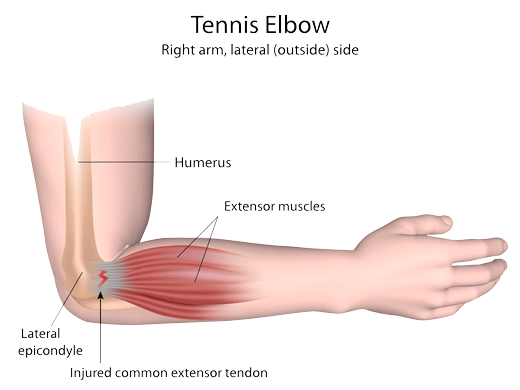Ouch! About 40% of amateur golfers get injured on the course, and over half of the professionals have had to stop playing due to injury. In fact, what you don’t know can hurt you, so read on to learn about common golf injuries—and how to avoid them.

Golfing Pains
You’ve probably heard a fellow golfer complaining of back pain. Lower back injuries are by far the most common for golfers, followed by those to the elbow and hand/wrist. Knee and hip-related injuries, although less common, are also not unheard of, and golfing can exacerbate preexisting knee and hip problems.
Lower back pain is usually a consequence of the repeated rotational stress of your swing. Lack of mobility in the ankles, hips, spine, and shoulders can place extra stress on the back. Caddies are good for your health: bending over to pick up your golf bag or carrying it through the course all the time is bad for your back too. If you don’t have a caddy, consider getting a pull cart to help relieve your back.
Just like any golf club or ball, your body can be subject to wear and tear—especially your shoulders. The golf swing can cause chronic injuries to the muscles holding the elbow inside the socket. Typical shoulder injuries include rotator cuff tears, Bursitis, and tendonitis.
Unfortunately, golf has made a name for itself in the world of injury. Golfer’s elbow is inflammation on the inner side of the elbow as a result of gripping your clubs incorrectly. Tennis elbow, inflammation on the outside of the elbow, can also afflict golfers.

Next to the ball (hopefully!), the wrists and hands absorb the most force from the shot, and thus are vulnerable to injury. Trigger finger (pain in the tendons of the fingers), along with finger fractures, and wrist sprains are common.
Prevention is the Best Medicine
Drumroll please, and the most effective way to avoid injury is…you guessed it—stretching. Start with neck and upper shoulder rolls to loosen the upper torso, then the shoulders, and finish with some side bends and trunk rotations to loosen the lower back. Always practice your swing before actually hitting any balls, starting with a wedge and working your way up to the driver.
Get into the proper swing of things. A solid swing technique, with proper posture, avoids unnecessary stress on the back, shoulders, and elbows. Stand with your feet shoulder-width apart, distributing your weight equally on both feet, and without hunching over the ball. Try to transfer the energy smoothly through your muscles. Don’t overswing—if you swing too fast or too hard, you can strain your joints. Slowing down your back swing can also help you avoid shoulder injuries.
Off the course, you can still work to prevent golf injury by strengthening your muscles, focusing on flexibility, and building up endurance. Always remember to carefully lift and carry clubs—and anything else for that matter.
Choosing your equipment wisely can play a large role in avoiding injuries. Shoes with strong cleats can help to hold down your feet as you swing. But if you find you have knee problems, consider using spikeless shoes to reduce the stress on your knees. When it comes to clubs, avoid using weighted clubs and consider using lighter graphite clubs rather than steel shaft clubs. These choices will help your wrists in the long run.
Oops: Basic Golf Injury Treatment
Sometimes, even with all precautions taken, you have a bad day and get hurt. Give your shoulder the cold shoulder, along with your elbow. Usually, a combination of hot and cold compresses combined with rest will give you some relief in the time immediately following an injury, but always see a doctor when necessary.
In the long run, relieve golfer’s elbow by reducing the stress on your forearm by keeping a light grip on the club. And wearing an ACE bandage can help with elbow support. A low compression ball (like the balls in this sample pack) can also help reduce stress during impact. If your back continues hurting, try using a longer putter so that you are not crouching as much. Squeezing a tennis ball will strengthen wrists and hands again, in conjunction with lighter grip pressure, and golf clubs designed to absorb vibration.
Staying in shape is important to your wellbeing on the course. Try some of our favorite exercises to strengthen your wrists, hips, swing, and back. And it wouldn’t hurt you or your wallet to get a ball from Lost Golf Balls.
